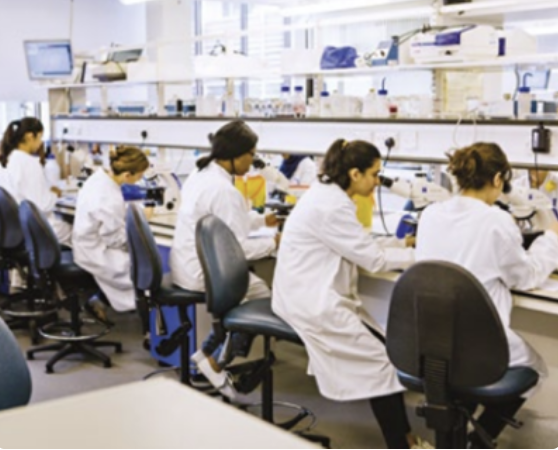Active learning at the University of Westminster

One of the primary aims of the University’s Education Strategy is that teaching should be “practical, active, inquiry/problem-focused and socially engaged”. This requires “learning and teaching activities that will engage students through practical activities, inquiry and real-world problems”.
The term ‘active learning’ does not refer to a specific pedagogical approach. It is an umbrella term that covers a range of different approaches that are quite distinct from traditional teaching.
Traditional teaching

Traditional teaching approaches are typically teacher-centred and involve the teacher being present in a room with a group of students. The teacher conveys information to the students either by simply talking, or by presenting information written on a board or in a digital presentation. This approach to teaching is sometimes referred to as “chalk and talk” The students are mainly passive recipients of the information. They may take notes and they may have the opportunity to ask questions, but the process is often instructional. For many people in the general public, this is the form of teaching and learning that comes to mind when they conjure up an in image of student learning at university, with a lecturer standing in front of large number of students in a tiered lecture theatre.
Whilst the lecture may still have a place in higher education, most university lecturers now recognise that students don’t actually learn much by simply listening to lecturers, taking notes and regurgitating information in traditional assessments.
What is active learning?
Active learning is student-centred. It requires the learner to actively engage in the process. Rather than passively receiving information, students should be actively participating by engaging in activities and interacting with one another. In this way they take greater responsibility for their own learning, they make connections with existing knowledge, and they develop higher order intellectual skills.

Active learning can take place in any learning environment, including a lecture theatre, a seminar room, a laboratory or studio, online, in the field, or in students’ own personal learning environments. Students may work individually, in pairs or in larger groups.

Active learning must not be seen as a standalone method distinct from other teaching and learning approaches. Rather, it is a term that includes a wide range of approaches including, inter alia, inquiry-based learning, problem-based learning, flipped learning, group work and many others. You will find more detailed explanations of these approaches elsewhere on these pages.
The key requirement for learning to be active is that students are provided with a suitable stimulus to act as a prompt to engage in an activity that makes a positive contribution to their own learning. In a lecture theatre this might include polling activities, paired discussions or ‘read and explain’. More broadly, active learning might include group presentations, project work, field trips or countless other activities.

What are the benefits of active learning?
- Research has shown that students learn more when they are actively engaged rather than being passive recipients of knowledge. (For example, see Deslauriers et al, 2019)
- Learning activities can be enjoyable, and students who are enjoying their learning tend to be more motivated and enthusiastic.
- When used effectively, active learning can promote deeper learning, rather than the superficial learning associated with simply conveying information.
- Active learners develop the ability to take responsibility for their own learning, thereby enabling them to extend their own learning.
- The experience for teachers can be more enjoyable, because they have the opportunity to interact more with students.
How do I start with active learning?

The starting point must be the learning outcomes. What do you want students to be able to do on completion of your module? What do you want them to learn?
Once you have a clear vision of your learning outcomes, you should think about the assessment. What forms of assessment will provide opportunities for students to demonstrate the achievement of the learning outcomes?
Having developed your ideas for assessments, now think about the type of activities that students can undertake to help them learn and to enable them to tackle the assessments. This will obviously depend on the nature of the subject and the level of the students, but there are countless examples of activities that will contribute positively to students’ learning.
What are the challenges of active learning?

Firstly, an effective active learning approach generally requires an investment of time up front in designing activities, preparing materials and anticipating how the activities will be undertaken.
A second challenge is that, unfortunately, some students may not be initially very enthusiastic about active learning approaches, because such approaches require students to actually work rather than simply sit and watch! However, by working with students and coaching them through the process, they should realise the benefits and embrace the approach.
Showcase
CETI Introduction to Active Learning, by Andy Pitchford – Head of CETI
Pedagogy, Space and Artefacts, by Clare Tyrer
Links to external resources
Advance HE (2008) Active Learning: Quick Guide, https://www.advance-he.ac.uk/knowledge-hub/active-learning-quick-guide, [date accessed 12/09/23]
Deslauriers, L., McCarty, L.S., Miller, K. and Kestin, G. (2019) Measuring actual learning versus feeling of learning in response to being actively engaged in the classroom The Proceedings of the National Academy of Sciences (PNAS)
Flynn, M. (Ed) (2021) Compendium of Active Learning: Strategies for Student Engagement Available to download under a Creative Commons License
Godlewska, A. et al. (2019) Converting a large lecture class to an active blended learning class: why, how, and what we learned, Journal of Geography in Higher Education, 43:1, 96-115, DOI: 10.1080/03098265.2019.1570090
Gowers, I., Oprandi, P. and Betts, T. (2022) 100 Ideas for Active Learning Active Learning Network / University of Sussex; Available to download under a Creative Commons License
Jisc (2018) Approaches to Learning Design, https://www.jisc.ac.uk/guides/designing-learning-and-assessment-in-a-digital-age/approaches-to-learning-design, [date accessed 12/09/23]
University of Northampton (2018) Overcoming Barriers to Student Engagement with Active Blended Learning: Interim Report, https://www.northampton.ac.uk/ilt/wp-content/uploads/sites/2/2017/10/Student-Engagement-with-ABL-Interim-Report-v3-October-2017.pdf, [date accessed 12/09/23]